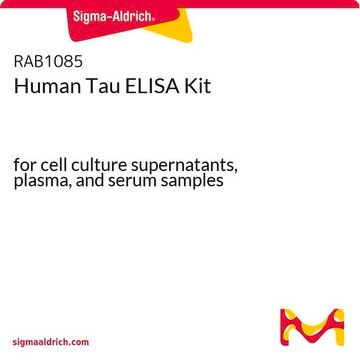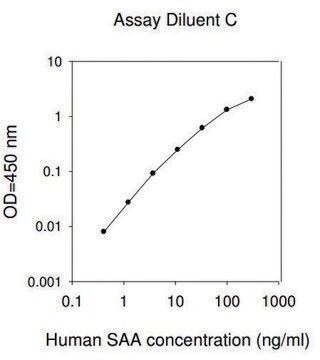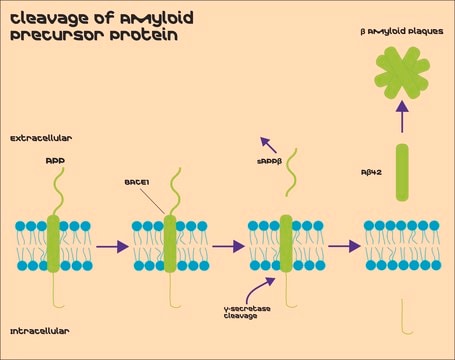EZHS40
Human Amyloid β40 ELISA Kit
measures and quantifies Amyloid β40 levels in 50 μL CSF, cell culture supernatent or plasma
Sinónimos:
Amyloid-beta protein 40
About This Item
Productos recomendados
Nombre del producto
High Sensitivity Human Amyloid β40 ELISA, This High Sensitivity Human Amyloid β40 ELISA is used to measure & quantify Amyloid β40 levels in Neuroscience research.
Quality Level
species reactivity
human
packaging
kit of 1 × 96 wells
parameter
50 μL sample volume (Overnight assay)
assay range
sensitivity: 6.0 pg/mL
(50 μl sample size)
standard curve range: 16-500 pg/mL
technique(s)
ELISA: suitable
input
sample type plasma (K2 EDTA)
sample type serum
sample type cerebrospinal fluid (CSF)
application(s)
research use
detection method
colorimetric (450nm/590nm)
shipped in
wet ice
storage temp.
2-8°C
Gene Information
human ... APP(351)
General description
Specificity
Application
Neuroscience
Alzheimer′s Disease
Storage and Stability
Other Notes
Disclaimer
Optional
signalword
Warning
hcodes
Hazard Classifications
Aquatic Chronic 3 - Met. Corr. 1 - Skin Sens. 1
Storage Class
8A - Combustible corrosive hazardous materials
Certificados de análisis (COA)
Busque Certificados de análisis (COA) introduciendo el número de lote del producto. Los números de lote se encuentran en la etiqueta del producto después de las palabras «Lot» o «Batch»
¿Ya tiene este producto?
Encuentre la documentación para los productos que ha comprado recientemente en la Biblioteca de documentos.
Nuestro equipo de científicos tiene experiencia en todas las áreas de investigación: Ciencias de la vida, Ciencia de los materiales, Síntesis química, Cromatografía, Analítica y muchas otras.
Póngase en contacto con el Servicio técnico








